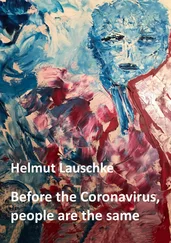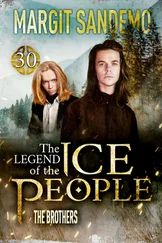Jamall has come across communities in the tunnels that he has felt uncomfortable with, but he adamantly believes that no one in the tunnels should be evicted.
“They make a life for themselves,” says Jamall. “They take care of each other better than up here. They sleep in places everyone up here has forgotten, and that’s not stealing; that’s being resourceful and surviving. Why take them out of there? They’re not hurting no one. Give them some space and some time to heal.”
“Be the inferior of no man, nor of any man be the superior. Remember that every man is a variation of yourself. No man’s guilt is not yours, nor is any man’s innocence a thing apart. Despise evil and ungodliness, but not men of ungodliness or evil. These, understand. Have no shame in being kindly and gentle, but if the time comes in the time of your life to kill, kill and have no regret.”
—William Saroyan, Epigraph , The Time of Your Life
THERE WAS AN EXTRAORDINARY DEPTH TO BLADE’S CHARACTER that I never really understood. In his kindness and warmth, as well as in his cold cruelty, he taught me most about the extremes that tunnel life can bring out in a person. He also exposed a dark part of myself I had not believed existed.
By treating me as a tunnel dweller, Blade brought me down to the psychological level of tunnel life, a more dangerous and unpredictable level. Exploring the tunnels as an observer, an outsider, had its physical risks. However, when I became accepted as an insider, privy to the anger and violence that are almost hourly events underground, the tunnels exposed me to another dimension, beyond fear and danger, inside myself.
Blade had warned me. Early in one of his guided tunnel tours for me, he said, “The people down here are just like people topside, only tunnels bring out a different part in them. A part of them that topside people in fancy suits don’t think they got. But they got it all right. It’s inside everyone. Everyone’s got the power to kill.”
Blade never analyzed a situation or weighed the consequences of an action before he acted, whether on instinct or whim or some other irrational emotion. He never doubted himself. If strange sounds came from a tunnel, we would enter it. If hostile men seemed to bar a tunnel’s entrance, we would go in if Blade felt “comfortable.” However, if a tunnel, no matter how peaceful it appeared to me, “felt bad” to Blade, we would quickly turn and walk out. That was our basic understanding. He showed me tunnels as he chose. I listened, and followed. Our friendship grew from there.
He once scaled a thirty-foot tunnel wall to rescue a crying kitten, shivering on a high beam. Two hours later, he kicked an old man lying on the street because he hadn’t moved quickly enough out of Blade’s path. One night he carried a bleeding stranger, a victim of a robbery, fourteen blocks to a hospital because cabs refused to take an obviously nonpaying fare. (One cab did stop, but sped off when the driver spotted blood.) The next day Blade pulled a knife on a thirteen-year-old boy who was talking with friends, because Blade didn’t like the youth’s “attitude.”
I SHOULD NOT BE EXPLORING TUNNELS, OR ANYTHING ELSE, WITH such a dangerously unstable person, but I still do not believe him dangerous. He explains events in tunnels and relationships between homeless underground communities with clarity and incisiveness.
“Anger does strange things to me,” Blade says after I witness his confrontation with the teenager. “Feels like the pot of gumbo Mama used to make,” he says, “simmering and maybe gonna boil over, but not sure it will drop down the side to the flame and sizzle or explode.” Most tunnel people feel the same way, he suggests. Everyone here is suicidal, not fearing death and almost welcoming it, but with a primeval instinct for survival. On the surface, a bad day may lead to angry words, even violent outbursts, he says, but underground, it could mean someone’s life, perhaps your own.
Perhaps my own, as it turned out.
BLADE IS IN HIS EARLY THIRTIES. HE ISN’T SURE EXACTLY WHERE IN his early thirties, but thirty-three sounds like a good number, he says. He is very large, six foot four and about two hundred hard pounds. He lost the sight in his left eye in a fight; it is milky white rather than brown, like his right eye. He creates an imposing presence with a street smart aura, a frightening effect that he turns up or down as needed.
His past is sketchy. He remembers only the bright red lipstick of his biological mother. He lived with a grandmother, his father’s mother, and considers her his mother. She died when he was nine. He grew up quickly after that, he says. Though he always minded his manners, he says, because his grandma told him to always be polite, he got into trouble, first with kids in the same housing project in the Bronx. He was passed from relative to relative, then foster home to foster home. He never uses his name, Wilson. “I was Wilson when I was seven, but I’m Blade now.” Blade became his name when he was part of a Brooklyn gang. “They call me that cuz I’m sharp and quick with the blade,” he says proudly.
He tried to join the Marine Corps several times, he says, but was rejected. He claims to have been a Guardian Angel briefly, although the Angels have no record of him as a member. [8] The Guardian Angels patrol the streets and subways in red berets and tough attitudes. Most members are between twenty and twenty-three years old and volunteer ten to fifteen hours a week to help protect commuters in the more dangerous areas of New York. They were organized in 1979 by Curtis Silwa, one of a group of young men picking up trash in the Bronx and recycling it and, in the process, intervening to help people from being mugged. After some heroic responses to crime, Silwa organized the thirteen-member Guardian Angels. Though commuters seemed to appreciate their help, the city government was skeptical of their intentions. Some city politicians went so far as to dismiss them as thugs. Today, they are a nonprofit volunteer organization with five thousand members around the world with branches in forty-five U.S. and ten foreign cities, including London, Liverpool, Sydney, Berlin, and Milan. They are still strong and generally respected despite a few scandals in which Silwa himself came forth and admitted that the Angels staged some rescues.
He tells me at first that he is a graffiti artist, and as we pass graffiti in the tunnels, he points out his tag, or signature logo. Sometimes as we go he pauses to spray his tag on someone else’s work. He has many stories: Now he is just a hustler who spent his money on crack and lived in the tunnels. Now he has cleaned himself up and works at several odd jobs, and lives aboveground with lovers and friends.
I MET BLADE AT ST. AGNES’ SOUP KITCHEN NEAR GRAND CENTRAL Station. Blade is friendly and laughs often and openly, with a happy-go-lucky air. He is a gentle and familiar face at the basement kitchen, which serves soup and maybe a little hope to the homeless. He is remembered because he always thanks the servers.
The tables are emptier than usual this late afternoon, probably because the weather has turned warm and clear with springtime, as I pour green Kool-Aid into cups. I bend down to get another cup for a pregnant woman.
“Don’t look at her that way, man,” says a voice in a low and threatening tone. I recognize the voice as Blade’s and stand up smiling, but instead of the woman a man stands in front of me, lips slightly pursed and jaw askew, in a leering pose that makes me uncomfortable, then immediately angry. He looks me up and down, then reaches out to touch my arm as I hand him Kool-Aid.
Читать дальше












